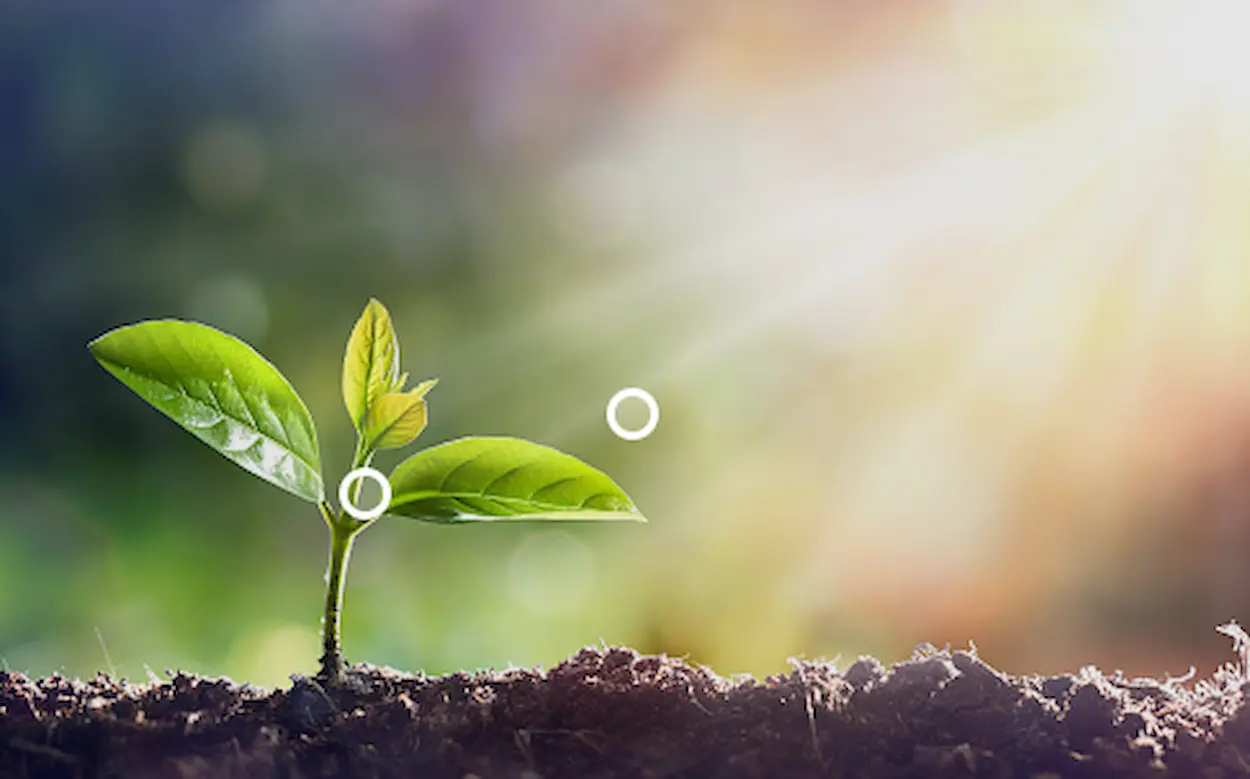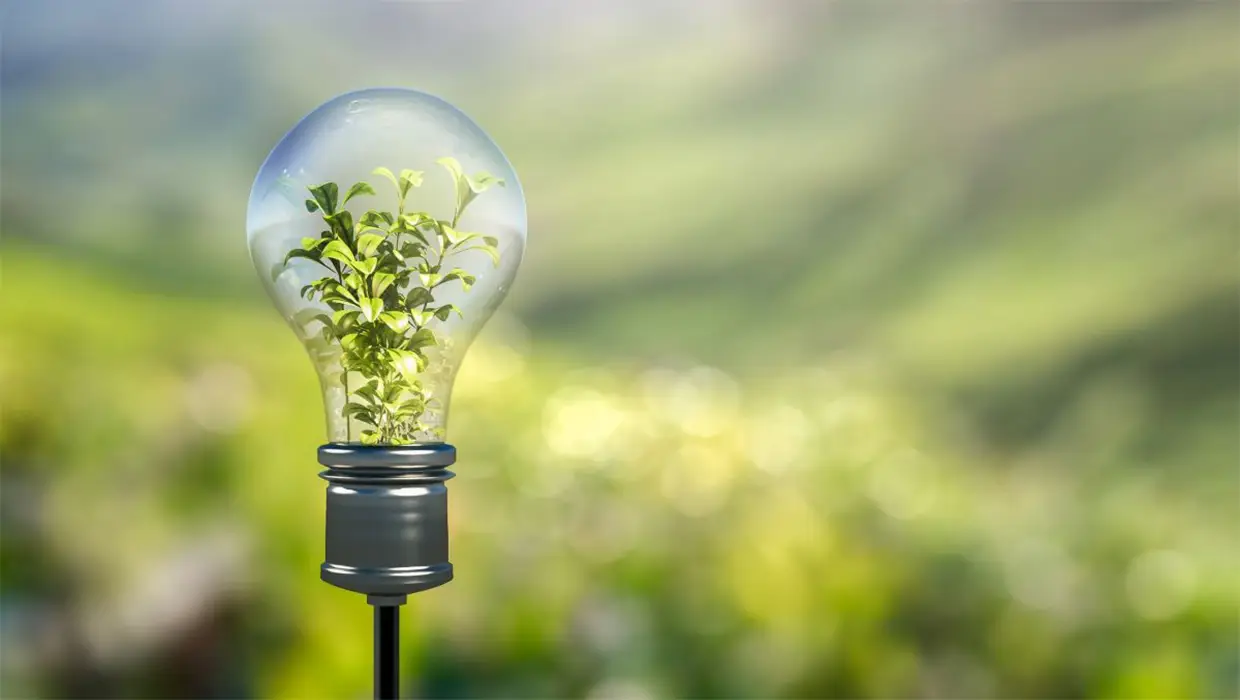Brief Introduction to LED Grow Light
LED grow lights, as we can learn from the name, are a kind of LED lights used to help plants grow. How do they work? As we all know that the light is necessary for plants’ growth, while LED grow lights is a role to replace the natural light when it is not available. Light-emitting diode(LED) lighting applies solid semiconductor chips as luminescent materials, which would emit excess energy by the recombination of carriers to produce photon emission that can emit red, yellow, blue, and green light directly. From this starting point, adding phosphor according to the principle of three primary colors, the light of any color can be given out including red, yellow, blue, green, and white. People can use different colors of light in terms of different growth phases of plants. But have you ever thought about the reason why we use LED lights for plant growth? Why not other lights? Let’s dive in…
Traditional Light Sources VS LED Light Source
Traditional light sources such as incandescent lamps, fluorescent lamps, high-pressure sodium lamps, and high-pressure mercury lamps have the disadvantages of low biological light efficiency, high energy consumption, and high operating costs if they are used in agriculture and biology industries. Taking artificial light plant factories as an example, the energy consumption of the light source accounts for about 40% to 60% of the operating cost of the system. Compared with traditional lighting, LED light sources can form a spectral absorption peak that is basically consistent with plant photosynthesis and its morphology. It has the advantages of high efficiency, low energy consumption, no mercury pollution, precise wavelength, intelligent controllable system, etc., which can save up to more than 50% energy, it has broad application prospects in many fields such as greenhouse light supplementation, plant tissue culture, plant factories, and genetic breeding.
What You Can Learn from This Article?
This article focuses on the standard progress of LED lighting for plant growth and discusses the framework of the LED lighting standard system for plant growth. Since 2012, The National Semiconductor Lighting Engineering R&D and Industry Alliance has been involved in the standardization of LED lighting for plant growth, and in 2013, the first group standard T/CSA021-2013 “Performance Requirements for LED Panel Lights for Plant Growth” was released, which promote the formulation of the group standard T/CSA 032-2016 “General Technical Specifications for LED Lamps for Plant Lighting”.
Group Standard T/CSA 021-2013 “Performance Requirements for LED Panel Lights for Plant Growth
There are many types of LED plant grow lights including flat panel lights, 2-ended lights, flexible light strips, and so on, which will change with the improvement of technology step by step. Around 2013, the main application of LED panel lights was mainly for the cultivation of seedlings, and the Group standard T/CSA 021-2013 “Performance Requirements for LED Panel Lights for Plant Growth” stipulates almost every aspect of LED panel lights such as their terms and definitions, categorization and naming, technical requests, test and inspection rules, packaging, transportation, and storage. The standard content shows that the basic measurement index of the LED light source for plant growth is quite different from the parameters of the light used for living lighting.
The standard defines the main radiation wavelength of LED flat light for plant growth, which refers to the red-orange radiation band of 600-700nm and the blue-violet radiation band of 400-500nm, which is the basis for defining blue-violet radiation illuminance, red-orange radiant illuminance, and further define the red-blue radiant illuminance ratio; the standard defines total radiant flux (unit: W) and total radiant illuminance (unit: W/m2) based on physical quantities to support plant growth. LED light production, testing, acceptance, and other work in the field. The standard defines the photosynthetic photon flux density [unit: μmol/(m2·s)], which refers to the number of photons within a certain wavelength range emitted by the lamp received per unit area of time during photosynthesis. But the number of photons received during photosynthesis is not easy to measure, thus, its technical requirements are not reflected in the standard.
The standard puts forward the basic safety requirements of GB7000 that LED panel lights for plant growth should meet, and the control device meets the requirements of GB19510.14, GB/T24825, and electromagnetic compatibility performance requirements; in terms of electrical characteristics, it specifies the power and power factor requirements; In terms of radiation performance, it stipulates the initial radiant flux/radiation efficiency, radiation intensity distribution, radiant illuminance, and red-blue radiant illuminance ratio, uniformity of radiant illuminance; requirements are also made in terms of radiation spectrum characteristics and lifetime characteristics.
Group Standard T/CSA 032-2016 “General Technical Specification for LED Lamps for Plant Lighting”
This standard focuses on the general technical performance and evaluation indicators of LED lighting products. Due to the wide variety of lighting products used in the plant lighting industry, the specifications and models are different, and the performance and quality are uneven, it is urgent to establish a relatively uniform judgment and evaluation standard for performance indicators. Since this industry is an emerging industry, the early introduction of relevant standards is convenient to guide the development of industrial technology and product positioning, but because the evaluation of some technical performance is not mature enough, some parameters (such as photon flux efficiency, light source spectral distribution and plant spectrum coincide. The requirements of degree grading need to be further improved.
According to the requirements of the application environment, the standard supplemented the terms C3 plants, C4 plants, CAM plants, and other terms classified according to the plant photosynthetic cycle pattern. LED lamps for plant lighting are classified according to lamp usage, plant photosynthesis mode, and control mode. The safety performance, structural appearance, electrical performance (power, power factor), optical performance, reliability, electromagnetic compatibility, etc. of the LED lamps used for plant growth have been standardized, and the photon flux efficiency of the lamps has been graded. The detection method was given according to the technical requirements.
In the structural appearance requirements, requirements are put forward for the anti-corrosion (up to WF2) and anti-ultraviolet aging of the lamp surface; in the optical performance requirements, the photon flux and photon flux efficiency are specified [The measured value should not be less than 0.7μmol/ (S·W)], it also standardized spectral distribution, light distribution curve and other parameters; the reliability part mainly focuses on the maintenance rate of photon flux and environmental adaptability; in the energy efficiency classification of lamps, first, it corresponds to the key points of photon flux efficiency of high-pressure sodium lamps [1.9μmol/(s·W)] and fluorescent lamps [1.3μmol/(s·W)], the photon flux efficiency of the LED light source is divided into three categories: Type I [ηP ≥ 1.9μmol/(s· W)], Type II [1.3μmol/(s·W) ≤ηP<1.9μmol/(s·W)] and Type III [(0.7μmol/(s·W) ≤ηP<1.3μmol/(s·W) )]. Secondly, according to the degree of coincidence of the spectral distribution of the light source, the light source can be divided into 3 categories or 3 levels according to different latitudes. The division of energy efficiency levels also considers the photon flux efficiency of the light source and the degree of agreement of the spectral distribution. The above 2 factors divide energy efficiency into 9 classes in total.
Conclusion
LED lights used for plant growth, such as plant factories, greenhouse light supplementation, and group cultivation of seedlings have been widely used throughout the country. It is a new technology that has emerged with the development of agricultural production models and the semiconductor industry. The development and implementation of LED lighting technology standards for plant growth can promote the transformation and application of scientific and technological achievements, play a basic guarantee, support, and lead role, which can promote the healthy and rapid development of the industry. If you still have other queries, you can feel free to connect with us, MOKO Light has a professional R&D team to offer you the best solution.








